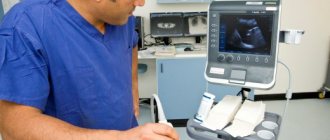The urine of a healthy person should be sterile. A small number of bacteria is considered acceptable, but their number should not be more than 10^4 per 1 ml. But exceeding the norm, together with an increase in the number of leukocytes, directly indicates the presence of inflammatory processes in the urinary system (pyelonephritis, urethritis, cystitis). In this case, the cause and type of bacteria should be determined.
Signs of inflammation of the urinary system
Signs of inflammation of the urinary system
- Itching, burning, discomfort in the urethra, mucous or purulent discharge from it
- Frequent urge to urinate
- Painful urination, pain at the end of urination and after it.
- Pain in the lower abdomen and lower back
- Increased body temperature
- Fatigue, feeling of weakness, lethargy, irritability
- Epithelial flakes in urine, pus or blood in urine
If, along with the detection of bacteria in your urine, you have the above symptoms or some of them, consult a doctor immediately! Timely diagnosis and treatment will help you avoid serious health problems, such as chronic purulent cystitis or pyelonephritis.
What indicators are considered normal?
Normally, human urine should be sterile; 10,000 units are allowed in 1 ml of urine . Accidental detection of microflora in urine during laboratory tests is associated with the characteristics of the patient’s physiology, as well as failure to comply with the rules for collecting material for analysis.
Photo 2. The norm of 10,000 units is left for the analysis error. Source: Flickr (thedailysarkar)
Pathways for bacteria to enter the urinary system
Lymphogenic route of bacterial penetration
- Lymphogenic pathway. This route of penetration of bacteria exists if internal foci of infection are located near the organs of the urinary system and kidneys. When bacteria actively multiply, they may penetrate into the lymph. Together with the lymph flow, they enter the bladder, and then into the urine, where they find an environment favorable for development and reproduction.
- Ascending path. Possible when pathogenic bacteria penetrate from the outside through the urethra, as well as during surgical interventions or medical procedures (installation of a catheter for urine outflow, cystoscopy, etc.)
- Hematogenous route. The presence of infection is possible in any organ or place in the body. At critical values, pathogenic microflora can penetrate into the urine through the bloodstream.
- Descending path. Possible for kidney diseases of various etiologies. When inflammation occurs, the attached pathogenic microflora descends from the affected organ into the bladder with a stream of urine.
Enterococcus faecalis
This type of bacteria is also part of the group of corynebacteria; it lives and reproduces moderately in the colon. Penetrates into the organs of the genitourinary system during defecation or failure to comply with personal hygiene rules. When corynobacteria have established themselves on the walls of the bladder, they begin to grow rapidly, which can lead to blood poisoning, and erosions and ulcers appear on the genitals that do not heal. Inflammation caused by this type of bacteria is difficult to treat, since the pathogen is highly resistant to most types of antibiotics.
Prevention of bacteriuria
Prevention is better than cure
To prevent the occurrence of inflammatory processes in the urinary system and, as a result, the appearance of bacteria in the urine, it is necessary to follow a set of measures that allow you to control your health. Carefully observe general hygiene, intimate hygiene and hygiene of underwear. Underwear should be washed separately from other, more soiled clothing. Don't have unprotected sex if you don't trust your partner about STDs (sexually transmitted diseases). Many of the infections of the genital area also affect the urinary area (gonococcus, fungal infections). Be careful when visiting public places (baths, saunas, swimming pools). Monitor your general health, undergo routine medical examinations on time, and take the necessary tests. If you experience any warning symptoms, contact your doctor immediately. As the doctors themselves say, it is easier to prevent than to treat.
Indications for the study
It is usually prescribed if there are appropriate indications:
- When disturbances in general well-being occur.
- When studying the presence of diseases of the genitourinary system (for example, in the case of cystitis, prostatitis or urethritis).
- If a pathological process develops in the body, studying the biomaterial will help obtain information about how its development occurs.
- In cases where a course of medical therapy is carried out, such a study allows you to monitor the condition of the patient’s body.
- When undergoing a preventive examination, this way you can obtain important information about the condition of the body.
Diseases that are characterized by the appearance of bacterial flora in the urine
Urolithiasis disease
- Diabetes
- Pyelonephritis
- Urethritis
- Cystitis
- Prostate adenoma
- Bacterial sepsis
- Interstitial nephritis
- Atherosclerotic embolism of the renal arteries
- Vesiculitis
- Nephrosclerosis
- Urolithiasis disease
- Inflammation of the urinary tract, kidneys and bladder.
Bacteriuria during pregnancy and childhood
During pregnancy, the load on the kidneys increases
The most common cause of bacteriuria in pregnant women is increased load on the kidneys. After all, now they have to work for two. In addition, there are hormonal changes. Also, due to the pressure of the enlarged uterus on the bladder, stagnation occurs in it, which, in turn, favors the development of pathogenic bacterial flora. The same pressure occurs on the kidneys, which are already overloaded with eliminating toxins. But now, a urine test has been performed, a diagnosis has been made, and the immediate question arises: how to treat? Many pregnant women are categorically against antibiotics, as they can harm the unborn baby. Of course, if it comes to easily removable external conditions, then you can do without antibiotics; the use of locally applied antiseptic solutions is sufficient. But if there is a serious condition, for example, severe kidney damage, then antibiotic therapy is necessary for vital signs. Also, untreated diseases of the urogenital area can cause miscarriage.
Why is he crying.
Symptoms and manifestations of bacteriuria in childhood are the same as in adults. However, it should be borne in mind that young children and infants are not able to tell you about painful sensations that may be associated with the most serious diseases. Therefore, carefully monitor your baby’s health, hygiene, and nutrition. Conduct a full examination of the child to exclude from suspicion such diseases as congenital defects of the kidneys, bladder, ureters, pathologies of the testicular structure and inguinal-scrotal hernia (in boys). If alarming symptoms appear, consult a doctor immediately! Symptoms to watch out for:
- After urination, the child cries loudly
- The child constantly tries to touch the genitals
- A child with normal fluid intake pees less than usual
- Urine is released frequently, in small portions
- Visually noticeable redness and inflammation of the external genitalia
- Diarrhea, chills, vomiting, restless behavior, fever accompanied by low urine output
Diagnostic methods
The use of various methods allows you to examine urine for bacteriuria, for example:
- TTX test. Microbes are identified by staining blue tetrazolium salts.
- Griess test. Used in diagnosing adults. If it is accompanied by the conversion of nitrates into nitrites, bacteria are present.
- Glucose reduction analysis. Urine collected in the morning is checked for the presence of glucose. If the volume is below normal, bacteria destroy it. The test is not accurate, but is used for express research that detects the initial stages of bacteriuria.
Among the methods, urine culture, which counts the number of harmful microorganisms, provides more information. The disadvantage of the study is that it takes a lot of time - from a day to two.
The result of high accuracy will allow you to obtain urine submitted for research within an hour. This is explained by the fact that prolonged exposure of urine at room temperature causes the loss of its chemical properties.
Drug treatment of bacteriuria
Biseptol is a sulfonamide drug
As a rule, nephrologists and urologists prescribe antimicrobial and antibacterial agents with a wide spectrum of action. For uncomplicated types of infections, drugs such as Furazolidone, Nitrofurantoin, Furazidin are used. In cases of severe bacterial infections, agents such as sulfonamides are indicated. These include such effective drugs as: Sulfalen, Biseptol, Streptocide, Sulfapyridazine, Norsulfazole, Sulfadimethoxine. After using antibacterial agents and sulfonamides, restoration of the natural bacterial flora of the intestine will be required, therefore, after completing the course of treatment with sulfonamides, it is necessary to take drugs with prebiotics, lacto- and bifidobacteria.
Treatment of bacteriuria with folk remedies
Chamomile decoction is an anti-inflammatory agent
Traditional medicine methods can only be used as maintenance therapy, since for full treatment they do not have the proper antibacterial effect against pathogenic microflora. As a rule, it is recommended to drink decoctions of chamomile, birch buds, juniper bark infusion, bearberry infusion, and parsley leaf juice. In addition to these remedies, the pharmacy sells ready-made herbal preparations that enhance the effect of antibiotics. relieving inflammation, reducing the symptoms of bacteriuria. Such means include: for example, Nephrophyte.
How to get rid of bacteria in urine? /video/
How to prepare a juniper decoction The amazing properties of birch buds All about sulfonamides Cystitis What does a urine test mean? Urinary tract infections Bacteria in urine What can be detected in urine Bacteria under a microscope Infections of the urinary system How to prevent bladder infections How to distinguish a viral infection from a bacterial one Treatment of a urinary tract infection Bacteriuria Leukocyturia - what you need to know about it
The appearance of bacterial flora in the urine, or, in medical terms, bacteriuria, can be a symptom of serious diseases. However, timely consultation with a doctor and careful attention to your health, and, if necessary, timely treatment will help you avoid serious health problems. We hope that our article was as informative and useful as possible for you. Don't get sick and be healthy!










